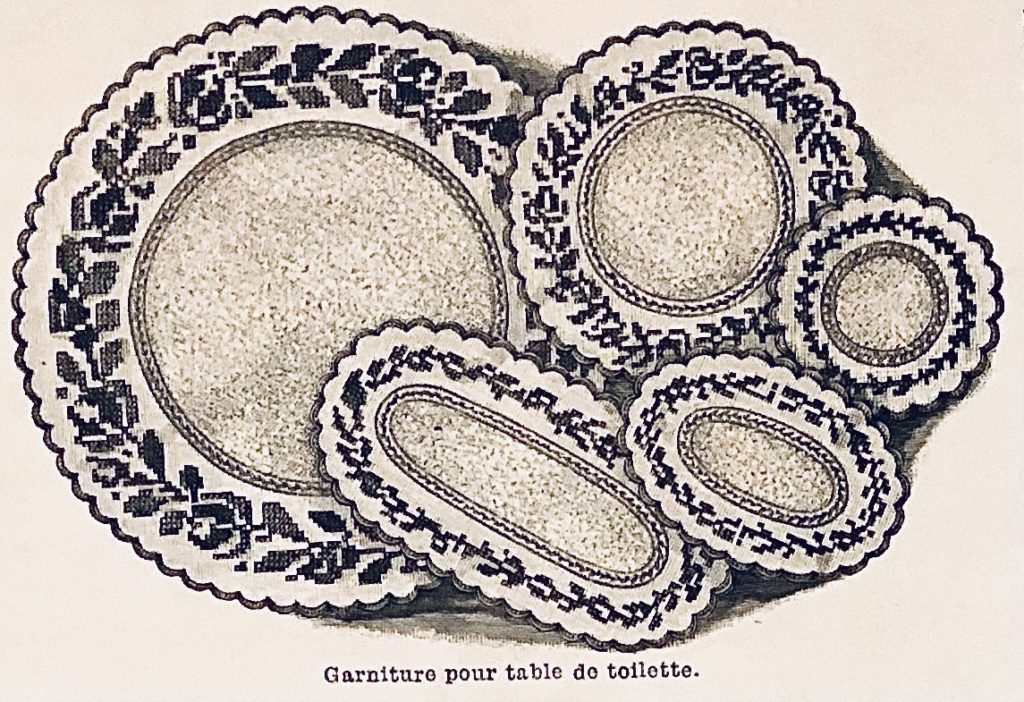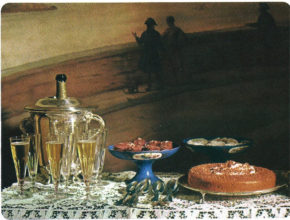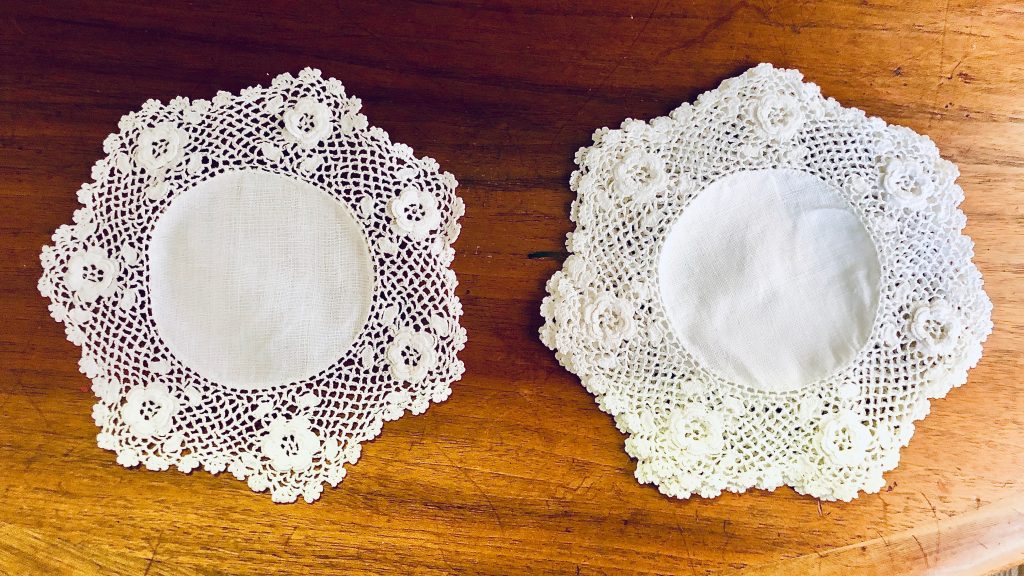
When you hear the word doily, you’re probably thinking of the paper variety that come under store bought cakes and yes, those are doilies. In past eras, they were made of cloth or lace. Most often you’ll see them in bright white with expensive lace and embroidery touches for the most formal uses. After all, keeping little bits of linen for specialized courses was expensive, and keeping all that linen bright and pressed was time consuming and implied you had someone to wash and maintain it. Like most unnecessary home items, these were status symbols.
Many believe that the doily was named after a Monsieur Doiley, a draper in the 1700’s. He was famous for the linen “doily-suit”. Somehow, the usage of that term changed to “doily-napkin” for a small napkin used during dessert that used the same cloth. In reality, it’s likely that doilies existed long before the man. In many places in Europe you will see small protective linen cloths called either napkins or lace. These look suspiciously like what we now call a doily. So, while the name might be his, the object preceded him. It is a pretty story though.
Interestingly, doilies might have a number of spellings if you look through old magazines and pattern books. In England you may see d’oilie or d’oyley, which may be a nod to their presumed French origins. In Australia and New Zealand you can see the modern spelling plus doyley and doilie.
An alternate story for the doily comes from the Bruce Herald, Issue 2617, January 22nd, 1895:
“The word doyley, now a familiar one with ladies, is derived from the name of Robert D’Oyley, one of the followers of William the Norman. He received a grant of valuable lands on the condition of a yearly tender of tablecloths of the value of three shillings on the feast of St Michael. Agreeably to the fashions of the time the ladies of the D’Oyley household were accustom to embroidery and ornament the quit-rent tablecloths; hence these cloths becoming curiosities and accumulating in the course of years, were at length brought into use as napkins at the royal table and called doyleys.”
Now this story really is fanciful as women all over the world embroidered linens and it was unlikely this particular collection alone became such a curiosity that it became a royal collection. If anyone knows of an academic citation, please let me know!
The Regency saw very limited use of items like doilies. Though there are textiles that resemble doilies from this period, they do not appear to be mentioned in guides for servants and cooks and in art they are not seen. This does not mean they were never used, but they must have been rare in Britain and the US. Royal tables, especially in France, did possess items that look like doilies in the 17th century, but the practice trickling down seems to be rare.
The doilies that we know of only really became common in the mid nineteenth century. Mass production of textiles during the industrial revolution is what made all the different types of linens for the home commonplace. It was at this point that the doily became ubiquitous.
Doilies might be embroidered, though colorful embroidery is not often seen prior to the late 1800s. Likely this has to do with the cost of dyes adding to the cost of threads. Novelty doilies became popularized by embroidery periodicals and magazines. There are some absolutely gorgeous embroidered doilies in the Edwardian period.
Owing to their small size and relative lack of expense in making them, doilies followed fads more than most table linens. You can find Art Nouveau, Art Deco and Classical doilies among dozens of other trends.
Every doily had a specific shape for its specific purpose. Here are a few:
Small circular doilies (usually 3-4 inches) – these are placed under the finger bowl. Finger bowls come to the table with a bowl and underplate – either a matching set or bowl and silver underplate, plus a doily in between. These were usually quite delicate and lovely as each guest would touch the cloth when they lifted the doily and bowl and placed them above the plate. There are cotton, linen, silk, and lace doilies. Crocheted doilies are unlikely to have been under-plate doilies as they do not have a smooth surface and no one would risk their very expensive porcelain, crystal and glass on a bumpy surface. The smaller of these could also be used under a ramekin or terrapin set, (oh, I’ll be covering terrapin sets, don’t you worry).
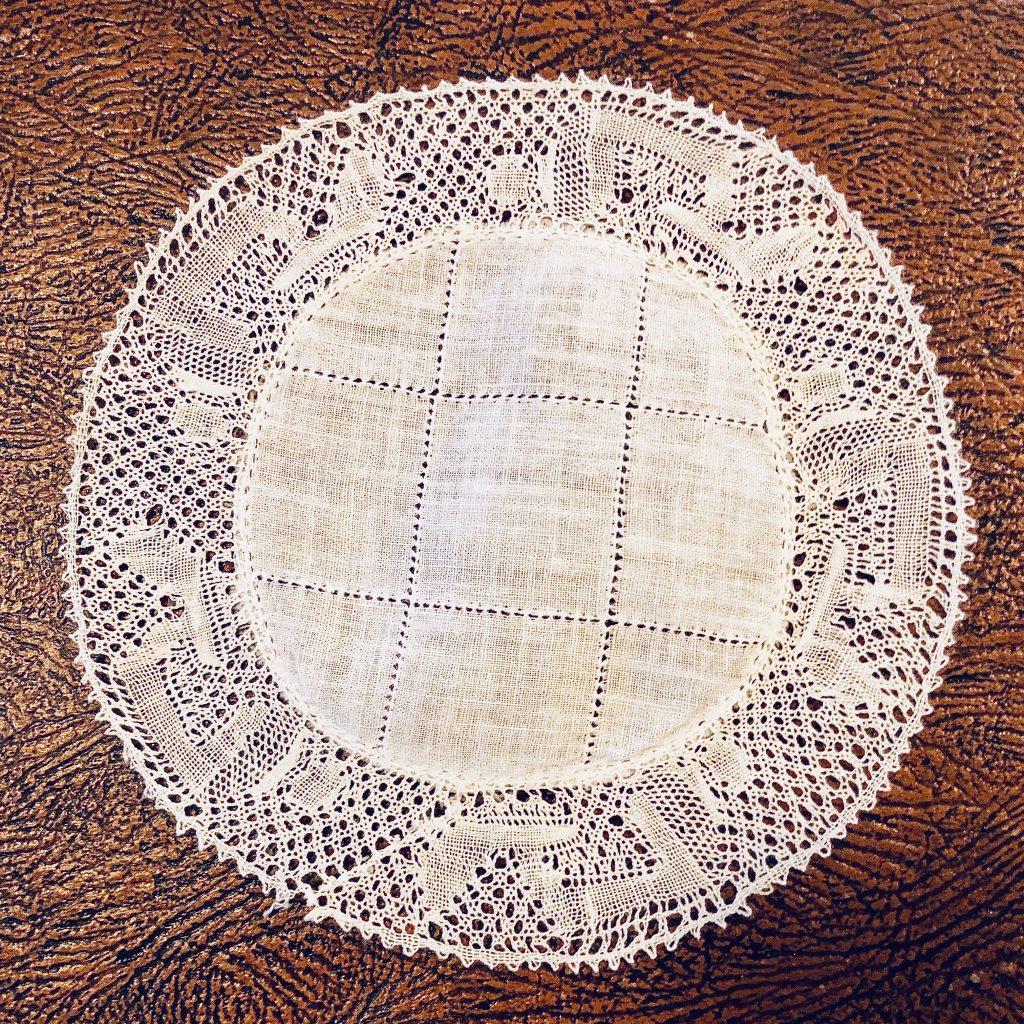
Tiny circular doilies (usually 2 to 2 ½ inches) – these are sometimes under the sorbet dish or Punch á la Romaine cup. Both of these were frozen or iced treats and especially when there was a silver sorbet service or punch cups, the doily prevented beads of moisture from touching the fingers. They could also be used under a myriad of tiny silver dishes should the need arise.

Often, you’ll see these little circular doilies mislabeled as coasters. What we might call a coaster was rarely seen outside of a bar or pub prior to the 1950’s and would have been made of pressboard. While there were wine coasters of various materials seen under decanters and wine bottles on fine tables as far back as the 17th century, drink coasters are rarely seen until much later. There are some glass and silver drink coasters found in catalogues as far back as the 1920’s, but they were not common. Coasters only seriously made their way into homes after the mid-twentieth century when fun sets popped to service the emerging cocktail era. Even then, until the seventies, guests would more likely have been given a cocktail napkin and they would have placed their drinks on these. I can’t advise you to repurpose these doilies as coasters as they are far too thin and may actually make rings worse by spreading the moisture out.
Small oval doilies (usually 5 x 3 inches, but can vary) – these are bread bowl doilies. They went between the silver bread bowl or bread basket and the bread. They can also be used in oval cake baskets.
Medium Circular doilies (5 to 6 inches) – These were used under cakes and scones in circular cake baskets. Important to note, you never put a doily under a cake you will need to cut. Seems obvious really. They go under items like scones, cookies and pre-sliced tea cakes.
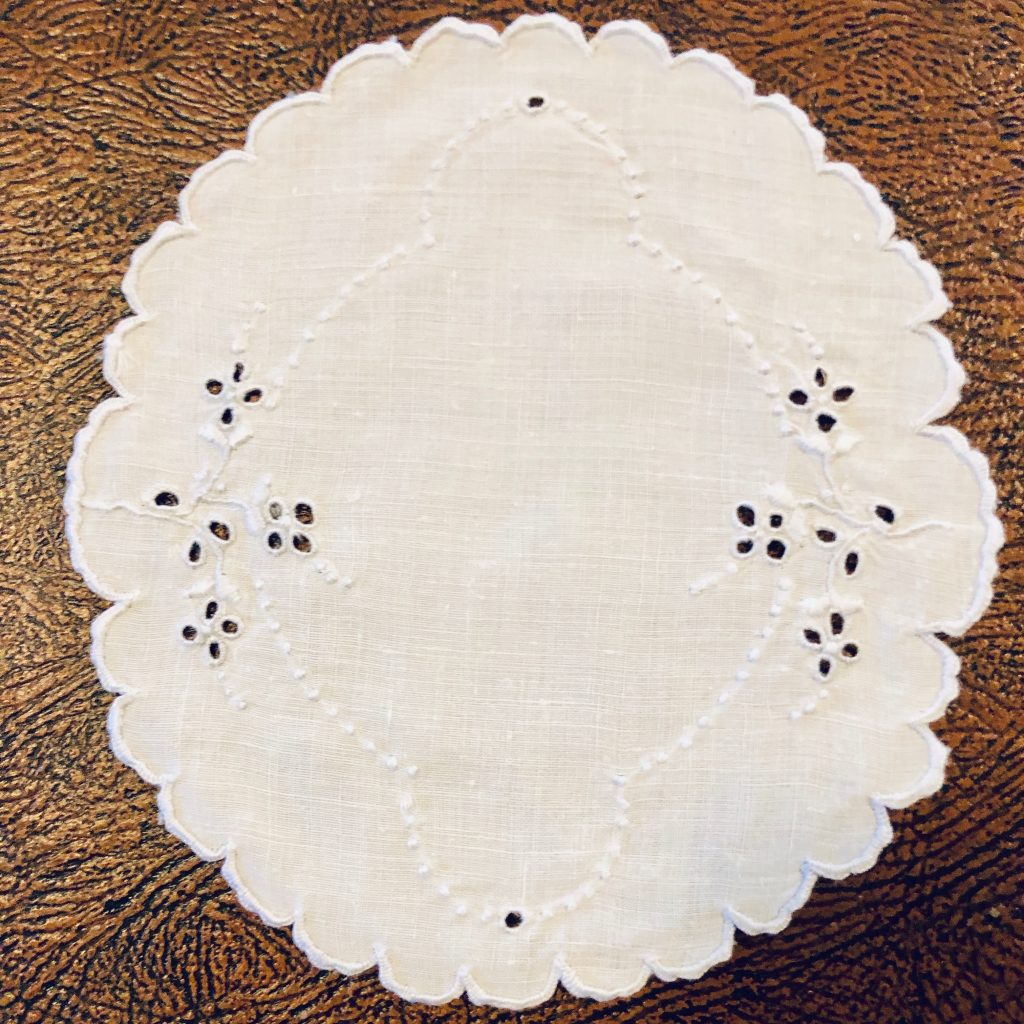
Small rectangular doilies with rounded edges (10 x 5 inches) – Sandwich and Sliced Cake doilies, to be used under tea sandwiches and sliced loaf cake. Shocker.
Now, there is some debate as to whether you should put doilies under tea sandwiches. I tend to put a doily down if there is no chance of filling spilling out. Bread rolls had their own special bit of linen and I’ll cover those in a later post.
The largest circular doilies are centerpiece doilies. They went under a bowl or epergne, (yup, I’ll be covering those later) that would hold flowers or fruit.
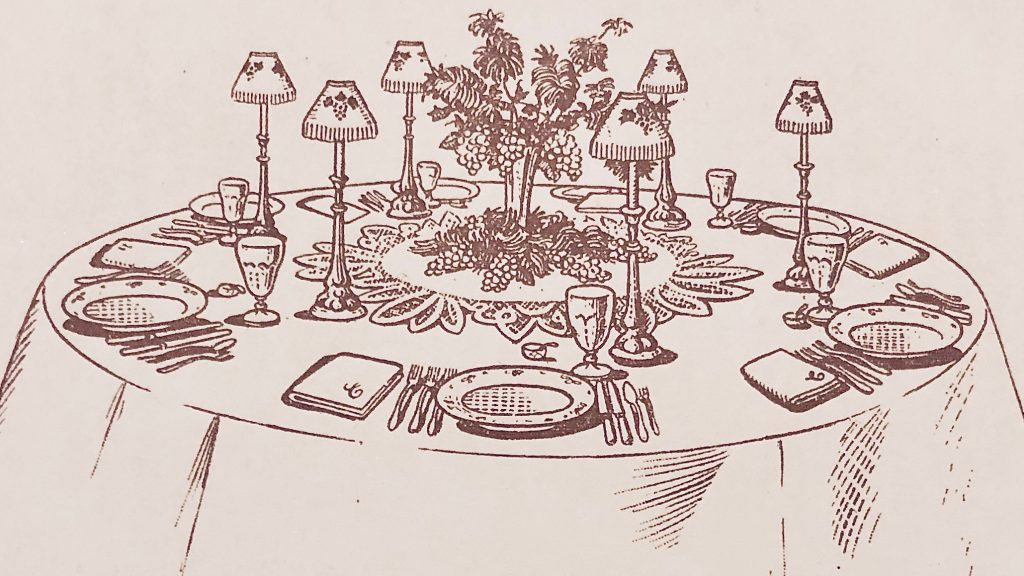
One thing to watch out for are matching sets of doilies with one large or medium sized doily and two small matched doilies. These are what’s known as a console or center table set. The larger doily is used for a floral or fruit arrangement and the smaller doilies went under candlesticks or candelabra. These were also used on sideboards and later on enormous 1950’s TV sets. These are often mislabeled which has led to sets being broken apart.
One interesting tidbit – you can look to the design of a doily to suss out its purpose. If a doily was to be placed on a beautiful surface to mainly look decorative, such as under a vase, it will likely be entirely made of cut-work lace. That way the surface of the table or tray below could be seen. When a doily was meant for a “practical” purpose, say, under a finger bowl or ramekin there is usually a solid linen or silk center where the dish would have sat, surrounded by lace or crochet. This is not always true, but it is a good general rule.

Paper doilies made an appearance in Victorian England, but they would not have been seen in a home. These were purely for tea shops and bakeries. Use of paper doilies began creeping into the home after the turn of the century, though it was not seen as truly respectable for quite some time. Paper doilies were used most often in the US by a rising middle class, where they were seen as a convenience for people short on servants but long on social ambition. Fannie Merritt Farmer advocated for the use of them in her cookbooks such as Catering, (1911) and paper entertainment companies like Dennison pushed for their adoption in booklets and advertisements.
It was the early 40’s and early 50’s that paper doilies became really popular, but even then, you might have seen them under the cookies at a dance or under tea sandwiches at a buffet, but never at a formal table.
Sometime in the 60’s convenience won and paper doilies finally took over in homes, ousting the cloth variety for all but the most chichi of occasions. Generally, these came either unwaxed or waxed. In the 70’s packets of colorful doilies in novelty shapes really took over and you begin to see the plethora of modern doilies that remained popular until the early nineties.
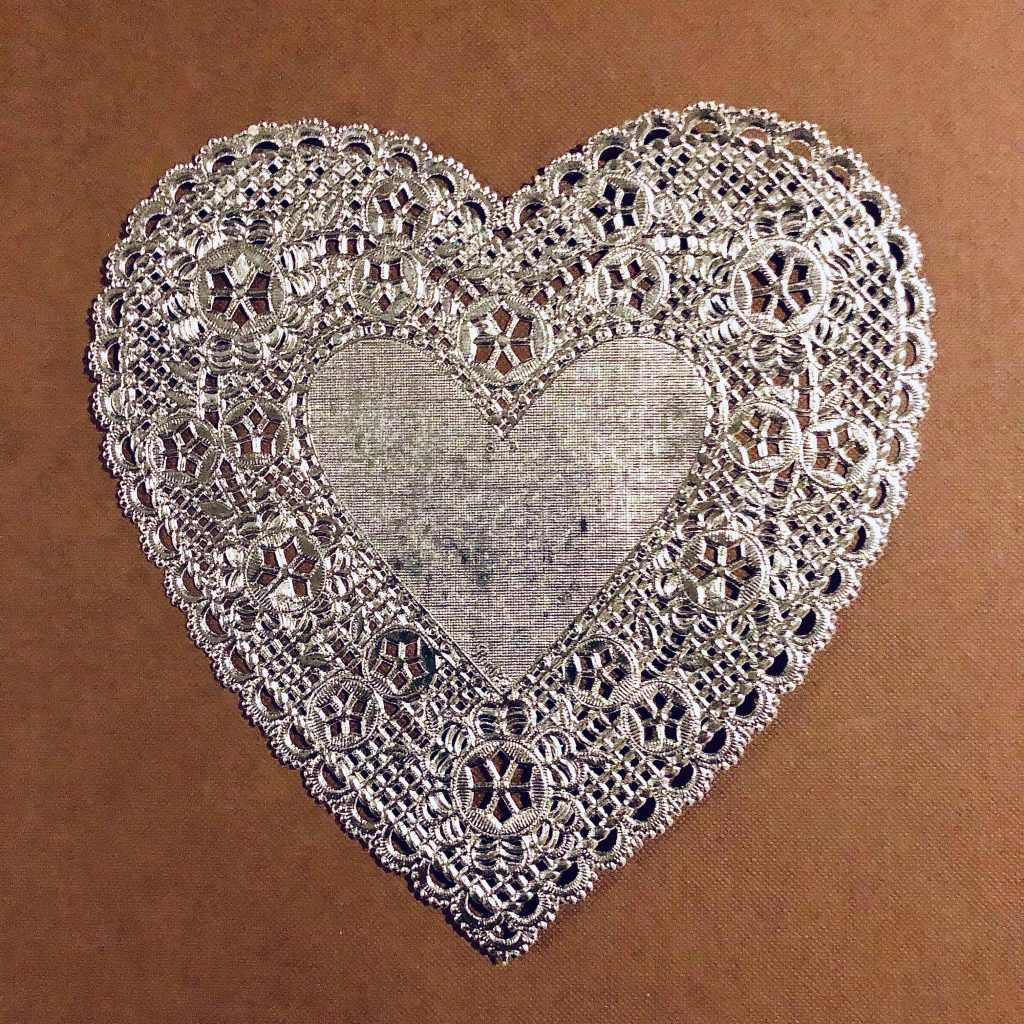
As entertaining became more casual and less stuffy in the late 1980’s and 1990’s, Martha Stewart and other entertainment gurus began advocating for using leaves, wood and bamboo under cheese arrangements, muffins, cookies and buffets and paper doilies became something your old Aunt might use. Still, paper doilies never really went out of use completely.
Paper doilies are wonderful to use on plates and platters when serving cheese courses or desserts. Just make sure to get waxed doilies if the cheese you are serving is soft. I once made this mistake and watched horrified, as a guest proceeded to consume a piece of paper doily that had stuck to the bottom of a moist bit of blue cheese.
Some snobs will say no to paper doilies full stop, others say they’re fine for children’s parties, large buffets and dances, but that you should only use the white doilies and never the novelty doilies such as red heart doilies for Valentine’s day or green shamrock doilies for St. Pat’s. Me? I go with whatever suits the mood of the gathering.
Finally, those same snobs will tell you that cloth doilies should only be white with cutwork or white on white embroidery. I think this only holds true for formal dinners. Blue and white patterns in table linens go back to medieval times, so just tell the snobs they’re so “nouveau”.
Trivia: There are small square doilies that were used under fingerbowls. These are very rare and have often been mislabeled as cocktail napkins or general-purpose doilies. I must admit, I long to see some as I have yet to see a set anywhere.
I hope you and yours are having a jolly time. Much love, Cheri
